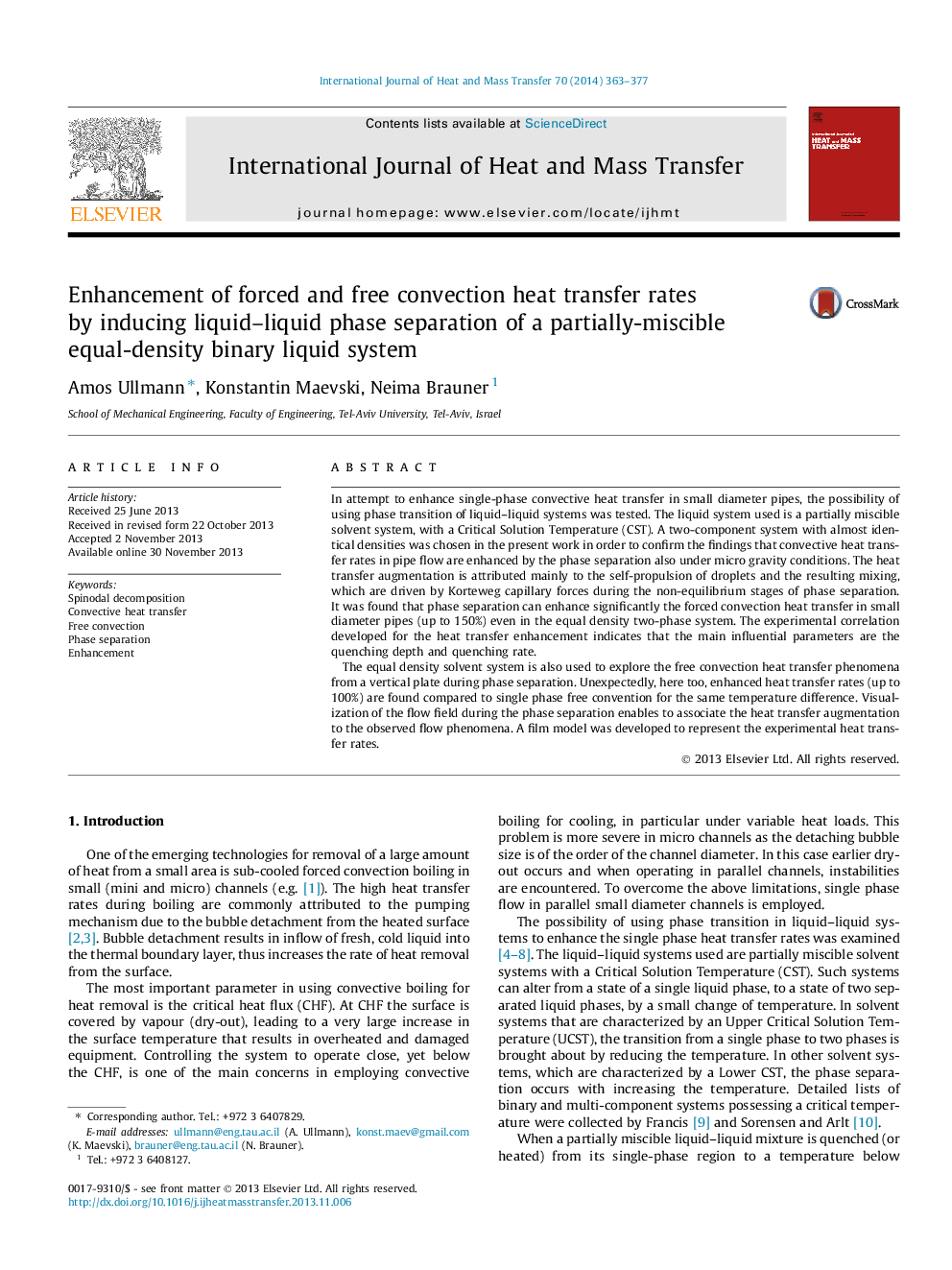| Article ID | Journal | Published Year | Pages | File Type |
|---|---|---|---|---|
| 657603 | International Journal of Heat and Mass Transfer | 2014 | 15 Pages |
In attempt to enhance single-phase convective heat transfer in small diameter pipes, the possibility of using phase transition of liquid–liquid systems was tested. The liquid system used is a partially miscible solvent system, with a Critical Solution Temperature (CST). A two-component system with almost identical densities was chosen in the present work in order to confirm the findings that convective heat transfer rates in pipe flow are enhanced by the phase separation also under micro gravity conditions. The heat transfer augmentation is attributed mainly to the self-propulsion of droplets and the resulting mixing, which are driven by Korteweg capillary forces during the non-equilibrium stages of phase separation. It was found that phase separation can enhance significantly the forced convection heat transfer in small diameter pipes (up to 150%) even in the equal density two-phase system. The experimental correlation developed for the heat transfer enhancement indicates that the main influential parameters are the quenching depth and quenching rate.The equal density solvent system is also used to explore the free convection heat transfer phenomena from a vertical plate during phase separation. Unexpectedly, here too, enhanced heat transfer rates (up to 100%) are found compared to single phase free convention for the same temperature difference. Visualization of the flow field during the phase separation enables to associate the heat transfer augmentation to the observed flow phenomena. A film model was developed to represent the experimental heat transfer rates.
